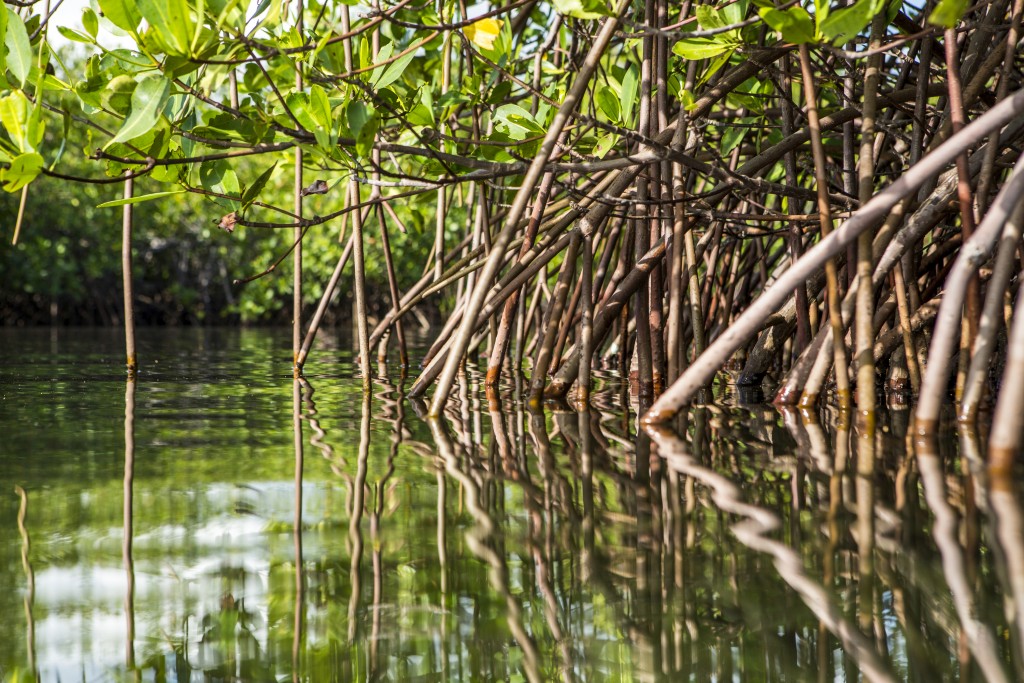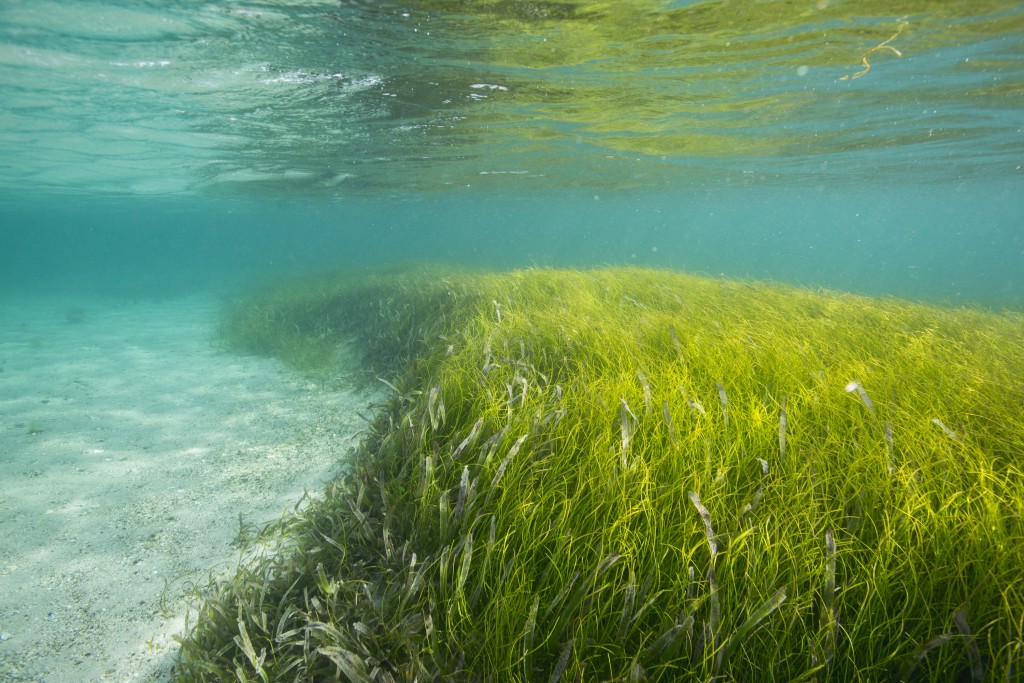Mangrove and Seagrass Restoration
The importance of seagrass beds and mangroves, and their susceptibility to a range of disturbances, means that they are often a focus of restoration efforts. Restoration of these habitats can often be required as part of a coastal development project, either as a remediation strategy or as part of an offset plan. Many of the considerations that should be applied to coral reef restoration are also relevant for seagrasses and mangroves. Below are some of the key issues and considerations that are particularly relevant to restoration of mangroves and seagrasses.

Mangroves offer coastal protection. Photo © Tim Calver
Mangroves
Although mangrove ecosystems have tremendous value for coastal communities and associated species, they are being destroyed at alarming rates. The following threats are contributing to extensive mangrove losses worldwide: shrimp aquaculture, charcoal production and logging, oil exploration and extraction, tourism, urbanization and urban expansion, and development of ports and roads. Today, less than half the world's original mangrove forest cover remains. As much as 50% percent of mangrove destruction in recent years has been due to clear cutting for shrimp farms. ref
Hydrological restoration has been recognized as the most successful and cost-effective mangrove restoration approach. There are two main types of hydrological restoration: 1) restoring tidal hydrology through excavation or backfilling, and 2) reconnecting blocked areas to normal tidal influences. ref
Principles of successful mangrove restoration ref include the following actions:
- Determine the cause or causes for the death or disappearance of mangroves from the area of interest. If a chronic stressor is still present (i.e. extended flooding), it may prevent successful restoration.
- Reduce or remove any chronic stressors in the area. An example would be putting a culvert under a road that was constructed and impedes tidal flushing or freshwater drainage. It is very common to see such roads with dead mangroves on the isolated side, and healthy mangroves on the water-ward side. Areas of mangroves that are diked also often suffer extended flooding. Reconnection to tidal waters is essential before restoration can proceed.
- If removing or adding fill material to a restoration site is proposed, the design and careful monitoring of the final target grade (i.e., ground elevation relative to a surveyed datum or reference point) is very important. The single most common error made in mangrove restoration is the failure to reestablish the correct tidal hydrology. The depth and duration of flooding tolerances for the mangrove species must be understood. Check the range of elevations over which a stand of healthy mangroves is naturally established at a location as close as possible to the target restoration site, and plan on establishing a similar range at the restoration site. Different tidal ranges require different target elevation ranges.
- An important component in mangrove restoration is the design and placement of tidal creeks and channels. Tidal streams provide access for fish and other mobile mangrove fauna, and allow for drainage of flood waters.
- The need to replant mangroves varies greatly from site to site. The decision of whether to plant or use nurse plant species like Batis depends on the expertise of the design team and observations from similar areas over a period of years.
Seagrass
Seagrasses are experiencing a worldwide decline due to a combination of climate change impacts and other anthropogenic factors. Seagrass areas along coastlines that are already affected by human activities (causing sedimentation, nutrient enrichment, eutrophication and other environmental impacts) are most vulnerable to climate change impacts. Restoration can either involve improving environmental conditions (e.g. water quality) to encourage natural regeneration or can involve seeding or the transplanting of seedlings or mature plants from donor beds. Seagrass beds can be restored by encouraging natural recolonization in areas that have experienced improvements in surface water quality. Proactive methods of seagrass restoration include transplanting of individuals taken from healthy donor beds or seedlings reared under laboratory conditions. In some cases seeds can be planted or broadcast. Seeding can be used alone or in concert with transplant techniques.

Restoration of seagrasses and mangroves (above) may be a viable strategy to aid in recovery following disturbances. Photo © Tim Calver
Several technical guidance documents (see Resources section below) have been published to assist restoration practitioners in selecting transplant sites and in choosing appropriate restoration methods. Restoration objectives, local conditions, seagrass species, and project budgets will determine which planting approach is most appropriate for a given site. Once transplantation has occurred, the sites should be monitored to determine survival rates, shoot density and areal coverage of the transplants. Key restoration planning guidelines include:
- Identify project goals regarding seagrass coverage, species composition and ecological function of restored seagrass beds
- Coordinate permitting processes to reduce delays in the review and approval process
- Preserve genetic diversity (choosing transplant stock from a variety of widely-distributed seagrass beds)
- Survey and site selection to ensure that existing environmental conditions favor seagrass restoration ref
